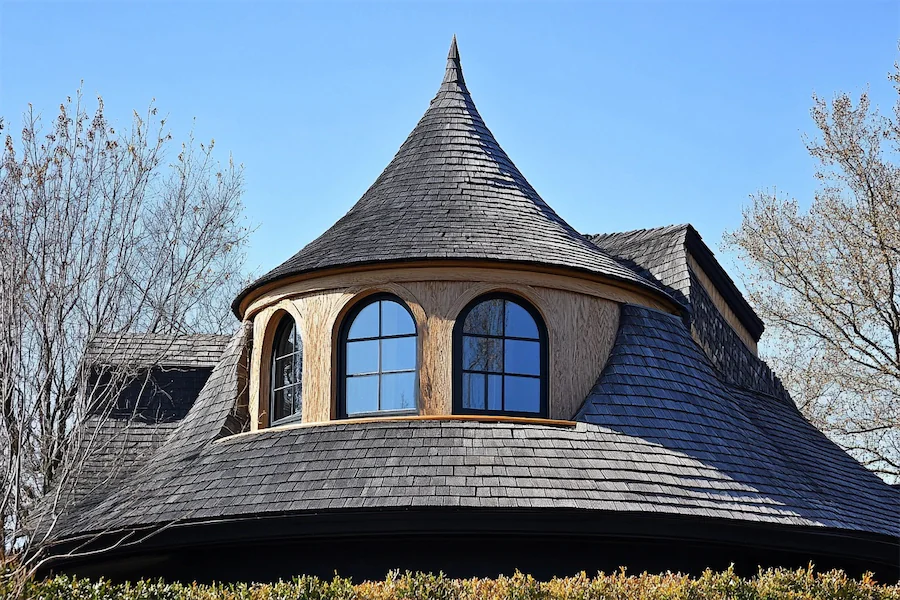A conical roof, also known as a cone roof, is a circular roof structure that tapers smoothly from a wide base to a point, forming a cone-like shape. This architectural feature is often employed to add visual interest and character to buildings, particularly in towers, turrets, and other cylindrical structures.
History and Origins of Conical Roofs
Conical roofs have been utilized in various cultures and architectural styles throughout history. In medieval Europe, they were commonly featured atop towers in castles and fortifications, serving both defensive and aesthetic purposes. The steep slope of the conical design facilitated the deflection of projectiles and prevented the accumulation of snow and rainwater.
In the Apulia region of Italy, traditional dry stone huts known as “trulli” are distinguished by their conical roofs. These structures date back to the 14th century and showcase the use of locally sourced limestone to create self-supporting roofs without the need for mortar.
Key Features of Conical Roofs
- Distinctive Shape: The conical roof’s unique geometry adds a striking visual element to buildings, often serving as a focal point in architectural design.
- Efficient Water Runoff: The steep, sloping sides of a conical roof allow for effective drainage of rainwater and snow, reducing the risk of water damage and leaks.
- Structural Integrity: The shape of a conical roof provides inherent strength and stability, enabling it to withstand various environmental stresses, including high winds and heavy snowfall.
Applications of Conical Roofs
- Towers and Turrets: Conical roofs are frequently used to cap towers and turrets in castles, churches, and other historical structures, contributing to their iconic silhouettes.
- Gazebos and Pavilions: In garden architecture, conical roofs are employed in gazebos and pavilions to create charming and picturesque outdoor spaces.
- Traditional Dwellings: Certain indigenous and vernacular architectures incorporate conical roofs, such as the aforementioned trulli in Italy and similar structures in other cultures, reflecting local building traditions and materials.
Considerations When Choosing a Conical Roof
- Construction Complexity: Building a conical roof requires precise craftsmanship and specialized knowledge, as the geometry involves complex angles and measurements. This can result in higher construction costs and longer build times.
- Material Selection: Selecting appropriate materials is crucial for the durability and appearance of a conical roof. Common materials include slate, metal, and thatch, each offering different aesthetic and performance characteristics.
- Maintenance Requirements: The unique shape of conical roofs can make maintenance tasks, such as cleaning gutters or repairing shingles, more challenging. Regular inspections and upkeep are essential to preserve the roof’s integrity and appearance.
Conclusion
Conical roofs are a distinctive architectural feature that combines aesthetic appeal with practical benefits. Their historical significance and unique design continue to inspire architects and builders in various applications, from restoring historical structures to creating new, eye-catching designs. When considering a conical roof, it is important to account for the complexities of construction and maintenance to ensure a durable and visually pleasing result.
